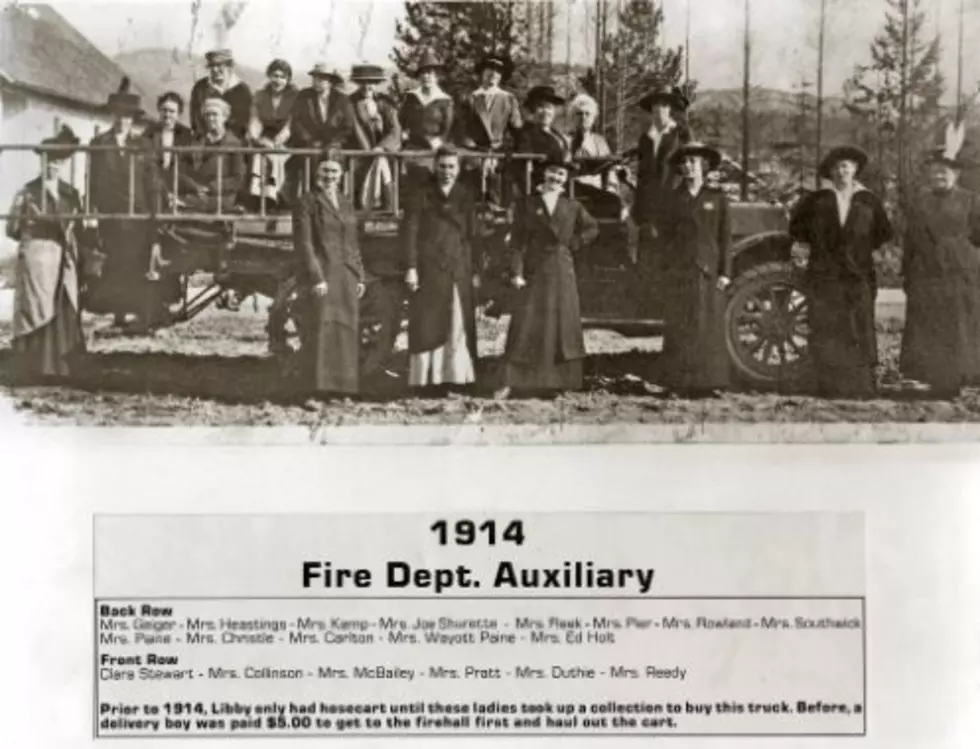
Harmon’s Histories: A tip of the hat to Montana’s volunteer firefighters
By Jim Harmon/Missoula Current
Joni Mitchell, in her Big Yellow Taxi lyrics, said it best: “You don't know what you got 'til it's gone.”
The sentiment (not appreciating something until it’s gone) came into play in Missoula in 1897, when a new city administration decided it would be best to do away with a paid fire chief to save some money and go all-volunteer.
The problem was: When the fire chief was forcibly retired, the volunteers all followed suit, and quit.
In the fall of 1911, Libby residents faced a similar crisis, but this time it was a severe shortage of folks willing to volunteer. Twenty-five more personnel were needed to bring the department up to a level needed to assure a fast response.
All of which leads us to the fascinating history of Montana’s reliance on volunteer firefighters.
In 1878, the Virginia City newspaper, the Madisonian, praised the work of the town’s volunteers: “The fire brigade did heroic work in extinguishing the flames and preventing the spread” of a fire in a wood shed at William Thompson’s place.
On October 1, 1890, Missoulians were awakened at 2 o’clock in the morning by “the sound of the fire alarm whistle” as the “whole side of Front street from Rankin’s Hall to Pattee street burned.”
Again, the volunteers were praised. “The fire department was quickly on the spot, and soon had their hoses attached to the fire plugs.”
“The firemen were working like heroes, and soon, with their extension ladders, had a hose on top of the opera house, chopped a hole in the roof of the Rankin building, and got a stream of water working on the fire.”
“The boys worked manfully and earnestly, and succeeded in saving the Rankin building and checking the flames there. If they had not, the opera house and the bank building would have gone, involving an additional loss of at least $175,000.” That’s nearly $5.7 million in today’s dollars.
Historically, Montana, by virtue of its massive size and its small population, has relied heavily on volunteers.
Libby is a good example. Back at the turn of the century, according to the LVFD website, “in the event of an emergency, a delivery boy was paid $5.00 to get to the fire hall first to haul the department’s only hose cart to the fire scene.”
But things changed in 1909 - Thursday, February 4, 1909 at 4:45am - to be exact.
“A catastrophic blaze destroyed Dr. R. Sailey′s Drug Store, the Geiger Building owned by John H. Geiger, the Switzer Building owned by Thomas Switzer, and the home of Mr. and Mrs. Archie Sanders.”
“Thankfully, all lives were spared, but the monetary loss was reported to have been between seven and ten thousand dollars.”
A couple of years later, “a group of concerned citizens met ... and named Chief W.S. Megquier and Assistant Chief John Kuklinski as a committee to constructively engage key members to form a competent fire department.”
“The following week, on May 18, 1911, a second meeting was held at the town jail building to complete the development of the formal organization. When all was said and done, the City of Libby and the surrounding area finally had a fire department.”
“In its first year, a total of 10 brave, young men manned the fire lines alone. Today, the fire department's roster is well over 30 active volunteers.”
The vitality of a volunteer group is largely dependent on its leadership. Back in the 1950s and 1960s, the name “Wood” was always associated with the VFD.
George Wood was the fire chief from 1939 to 1952, and Ernie Wood stepped into the slot from 1957-1964.
Today, similar volunteers keep small town fire departments and search and rescue teams vital.
A tip of the hat to all those answering the call.
Jim Harmon is a longtime Missoula news broadcaster, now retired, who writes a weekly history column for Missoula Current. You can contact Jim at harmonshistories@gmail.com. His best-selling book, “The Sneakin’est Man That Ever Was,” a collection of 46 vignettes of Western Montana history, is available at harmonshistories.com.
